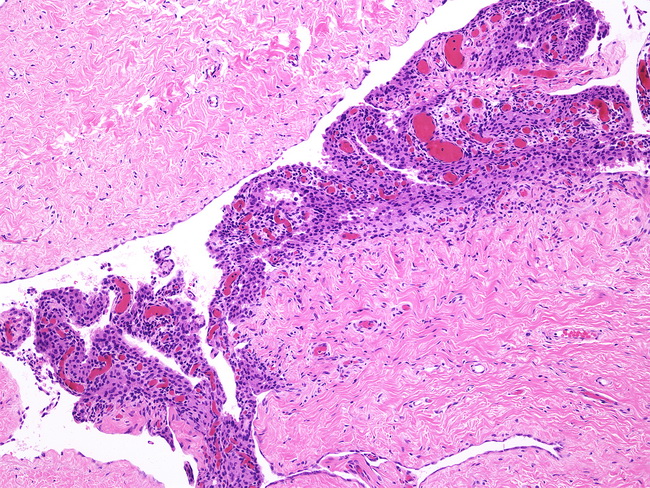Discover How Mesothelium Can Help Heal Your Wounds!
This article takes you on a journey through the incredible healing power of Mesothelium to make your skin healthier, free from the many scours that we suffer today. We’ll take a look at how modern science has managed to unravel the healing properties of Mesothelium and its powerful anti-aging properties. We’ll explore the ancient Chinese secret to making your skin younger, as well as how you can replenish the excellent cells within your skin.
History and Etymology for Mesothelium
The Mesothelium is a specialized epithelial tissue that covers the serous surfaces of many internal organs. It is a type of epithelium, meaning a layer of cells in a tissue that covers a body part. In humans, the mesothelium lines the pleura, pericardium, peritoneum, and the serosa (lining) of the body cavities. The cells in the lining have highly specialized functions, including providing a barrier to protect the body from potential infectious agents such as bacteria and viruses and moisture loss. Another essential function of the Mesothelium is gas exchange. The alveoli within the lungs are also covered by a layer of this tissue, except in the case of the small intrapleural spaces.

Differences in cell types within the Mesothelium
The Mesothelium is a thin tissue layer that lines the body cavity and covers the heart. It consists of two different cell types. The other cells that make up the Mesothelium are the endothelial cells. Endothelial cells are the smallest of the kind of cells in the body, with the ability to squeeze through tiny blood vessels. They line the blood vessels and serve an essential role in maintaining normal blood flow.
Cell heterogeneity within the Mesothelium
A paragraph about “Cell heterogeneity within the mesothelium”. Mesothelial cells originate from the pleura, thin layers of tissue covering the lungs. Mesothelial cells are thin, flat cells. They are found in the visceral and parietal pleura space, called the Mesothelium. The Mesothelium cells are very similar to endothelial cells, and the tissue functions similarly to a barrier. Mesothelial cells can produce several factors, including elastin and serotonin. Both of these factors contribute to the elasticity of the Mesothelium.
What is Mesothelium?
The Mesothelium is the membrane that is found around organs in the body. The Mesothelium is the outer lining of all thoracic and abdominal organs, including the heart, the lungs, the esophagus, the abdominal cavity, and the peritoneum. It comprises mesothelial cells, which are very flat and broad, like the cells that make up the lining of blood vessels. The function of the Mesothelium is to create a barrier between the internal body organs and the outside environment.
Things you should keep in your Mind
- What is Mesothelium?
- What does it do?
- What are the different parts of Mesothelium?
- What are some organs that have Mesothelium?
- What are mesothelial cells?
- What are some examples of cells that make up the lining of blood vessels?
- How does Mesothelium differ from the lining of blood vessels?
What are the functions of Mesothelium?
The Mesothelium is the middle layer of tissue covering the outside of the lungs and other organs. The mesothelium functions as a protective barrier against the environment, against the rest of the body’s tissues, and pathogens. The body’s outer layer, the epidermis, protects the underlying tissue and organs from the environment. The inner layer of the body, the endomysium, is the supportive tissue that attaches and supports the organ. The middle layer, the perimysium, lies between the epidermis and the endomysium.
Mesothelium complexity
The Mesothelium is a tough tissue that coats the pleural membranes of the lungs, the peritoneum of the abdomen, and the pericardium. The Mesothelium is the tough tissue that covers the pleural membranes of the lungs, the peritoneum of the core, and the pericardium. Mesothelium helps to protect these tissues from damage. It is essential to protect the heart because blood needs to flow quickly during exercise. It also helps protect the lung from the environment and harmful substances (including many inhaled toxins).
British Dictionary definitions for Mesothelium
The cellular tissue forms the lining of most serous cavities in the body and many internal organs.” The Mesothelium is a type of connective tissue that lines the serous cavities in the body and most of the internal organs—pulmonary circulation—the circulation of blood within the lungs. Mesothelial cells are named for their intercellular structure, a network of microvascular tubes called “mesangial matrices”. Each box has a smooth inner surface; the lumen contains a secretory vesicle containing several transport protein molecules.
Structure of the Mesothelium
The Mesothelium is a thin, two-layered membrane that lines the surface of the thoracic cavity. The Mesothelium is a thin membrane that lines the surface of the thoracic cavity. Its function is to protect the heart and lungs and support the surrounding organs. The Mesothelium is a thin layer of cells that lines the inside of your chest, protecting your heart and lungs. It’s similar to the lining of your digestive tract. The cell membrane structure is made up of proteins and lipid molecules. The proteins in the cell membrane, also called the cell membrane, are specialized into a thin layer that covers the inside of the cell.
Mesothelium’s role in wound healing
The Mesothelium is the mesentery’s inner lining. Mesothelium’s role in wound healing provides a barrier between the tissue and the outside environment. Mesothelium seals the wound by closing over the tissue, which prevents contaminants from getting into the area. The Mesothelium provides a barrier between the tissue and the outside environment, sealing the wound by closing over the tissue to prevent contaminants from getting into the area.
Conclusion
The Mesothelium is a cell type found in the lining of many body cavities, including the pleural cavity. The word Mesothelium derives from the Greek word “meso,” meaning “middle,” and “there,” meaning “a sheath.” The Mesothelium is usually considered cells that reside between epithelial cells and connective tissue peritoneum.